The Bell P-39 Airacobra
A brief history

The Bell P-39 Airacobra was a fighter produced by Bell Aircraft produced for the U.S. Army Air Forces during World War II. It was one of the principal American fighters in service when the United States entered combat. The P-39 was used by the Soviet Air Force, and enabled individual Soviet pilots to collect the highest number of kills attributed to any U.S. fighter type flown by any air force in any conflict. Other major users of the type included the Free French, the Royal Air Force, and the Italian Co-Belligerent Air Force.
It had an unusual layout, with the engine installed in the centre fuselage, behind the pilot, and driving a tractor propeller in the nose with a long shaft. It was also the first fighter fitted with a tricycle undercarriage. Although its mid-engine placement was innovative, the P-39 design was handicapped by the absence of an efficient turbo-supercharger, preventing it from performing high-altitude work. For this reason, it was rejected by the RAF for use over western Europe but adopted by the USSR, where most air combat took place at medium and lower altitudes.
Controls
- Normal flight controls
- VTOL=Flaps
- Trim=Trim
Flight instructions
Landing
- Flaps: 100%
- Trim: 100%
down - Speed: 165-180 kmph(103-112 mph)
Takeoff:
- Flaps: 50%
- pitch up att 240 kmph(150 mph)
Notes
This aircraft is trimmed after the height of 1000m (3 2801 feet)
Maximum speed is reached a height of 5000m (16 404 feet)
Flaps have 2 stages, one for taking off one for landing
Armament
- 1 × 37 mm M4 cannon firing through the propeller hub
- 4 × 12.7 mm Browning M2 machine guns
Features
- Semi-realistic performance
- High blueprint accuracy

Specifications
General Characteristics
- Predecessor Bell P-39 Airacobra
- Created On Windows
- Wingspan 33.4ft (10.2m)
- Length 30.4ft (9.3m)
- Height 11.6ft (3.5m)
- Empty Weight 6,516lbs (2,956kg)
- Loaded Weight 7,571lbs (3,434kg)
Performance
- Horse Power/Weight Ratio 0.198
- Wing Loading 31.4lbs/ft2 (153.2kg/m2)
- Wing Area 241.4ft2 (22.4m2)
- Drag Points 2300
Parts
- Number of Parts 590
- Control Surfaces 5
- Performance Cost 1,911

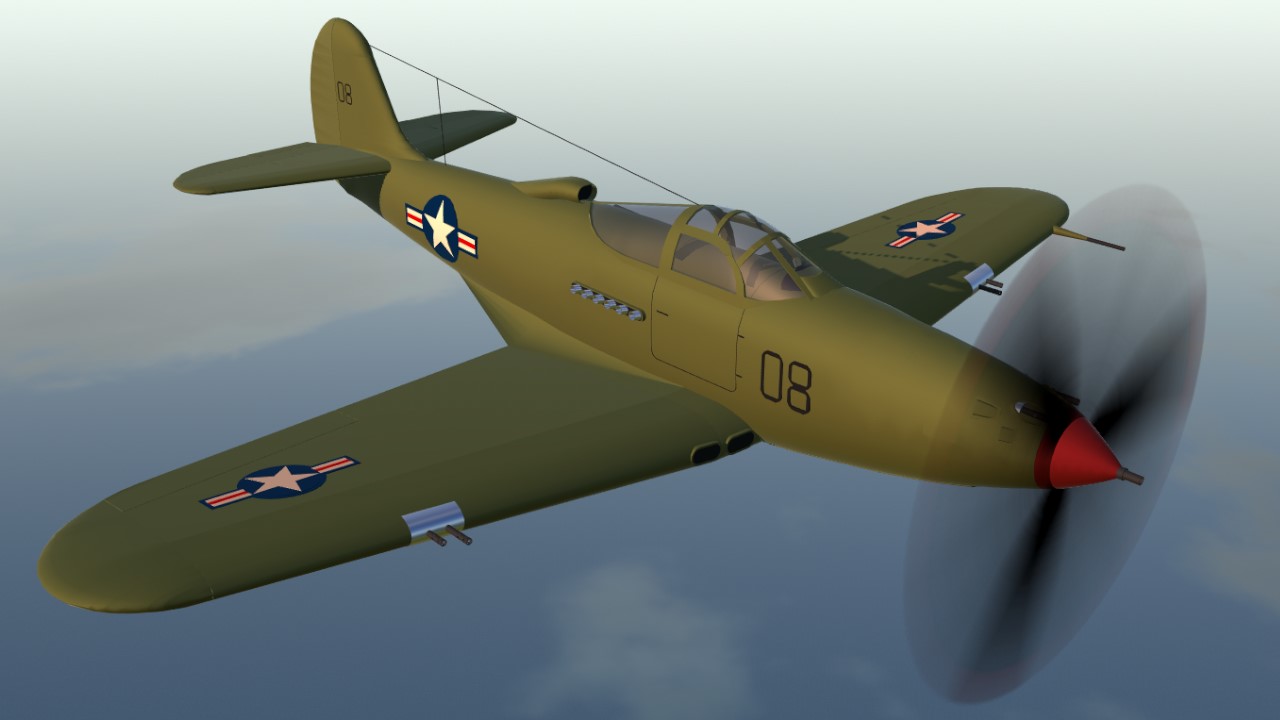
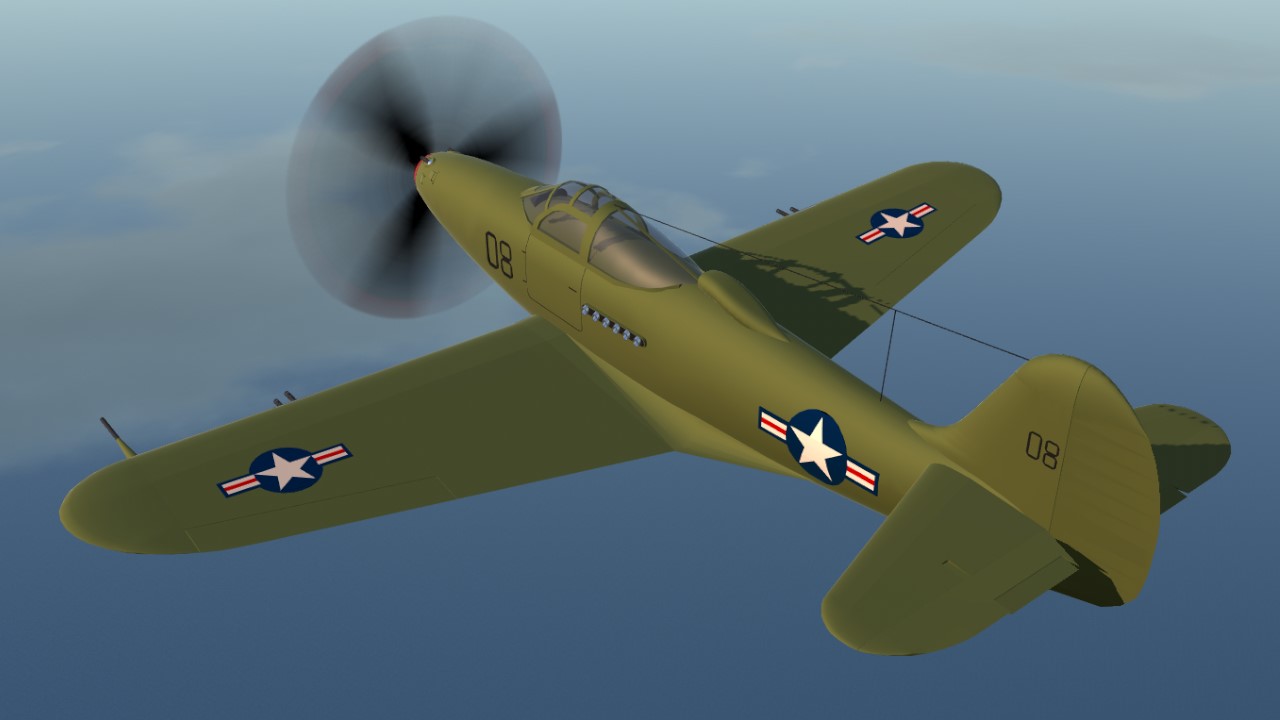
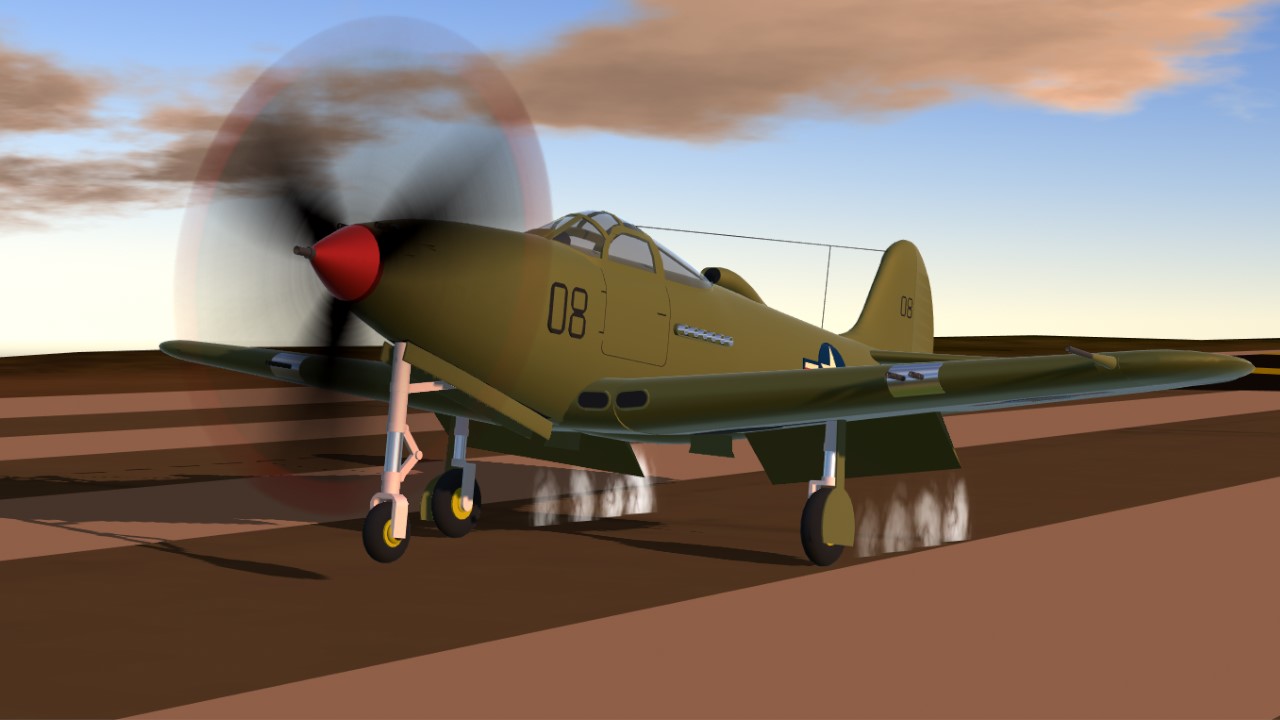
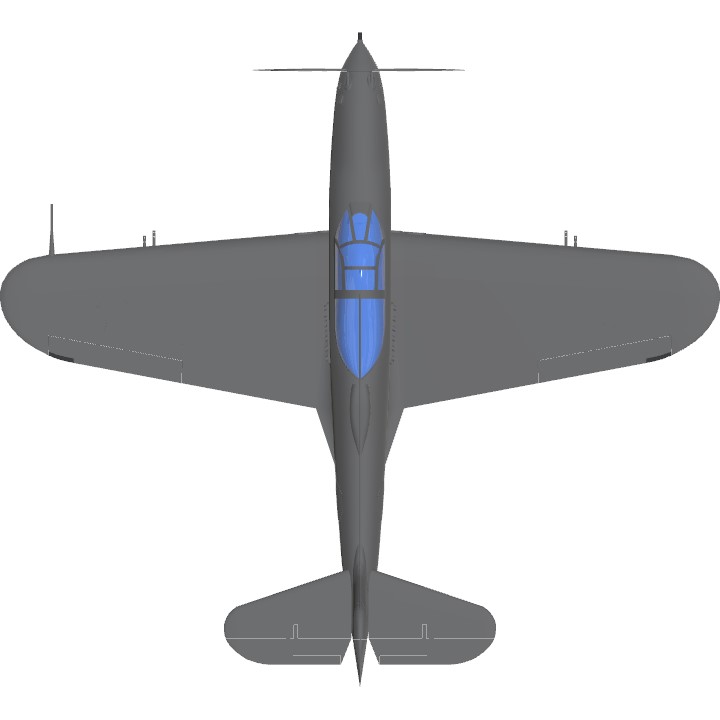
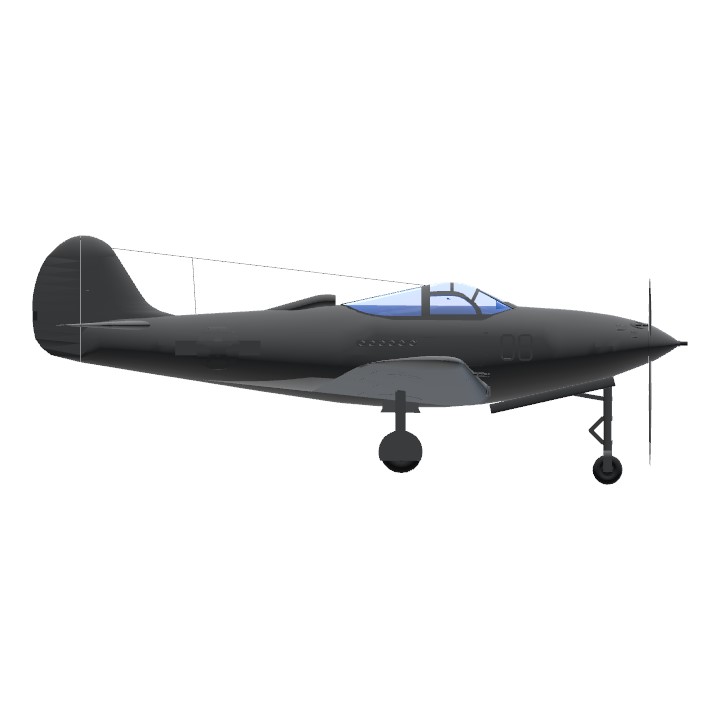
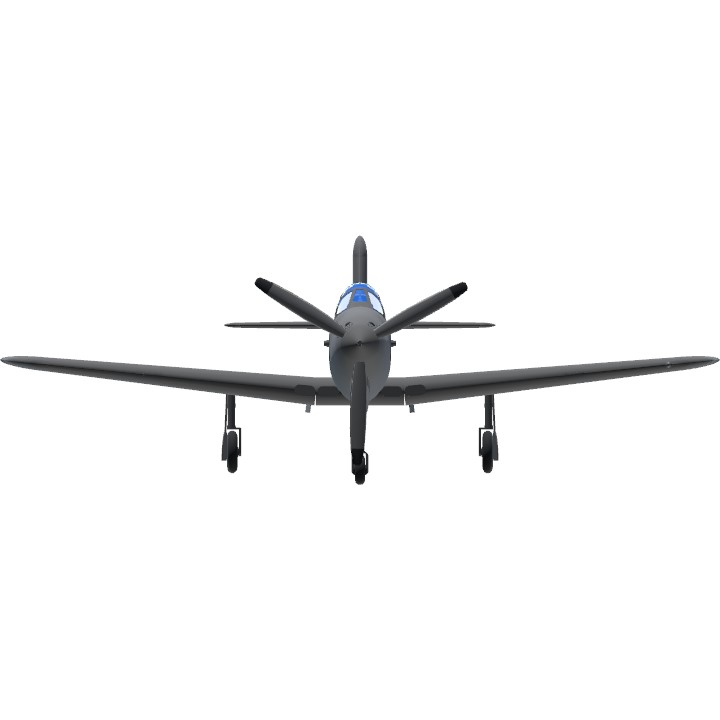
Bastante bien te salio
Perfection